Los Balcanes, posible puerta de entrada del hombre a Europa
Arqueólogos buscan demostrar esta teoría tras once años de excavaciones en la cueva de Kozarnika. El hallazgo de huellas de unos 1.6 millones de años pone en duda las hipótesis anteriores.
Oreshetz, Bulgaria - Los Balcanes podrían haber sido la puerta de entrada de los primeros hombres en Europa, en vez de otros lugares como el Estrecho de Gibraltar.
Un equipo de veinte arqueólogos búlgaros y franceses está intentando demostrar esta teoría tras once años de excavaciones e investigaciones en la cueva de Kozarnika, en el noroeste de Bulgaria.
El hallazgo en este lugar montañoso de huellas de actividad humana que se remontan entre 1,4 y 1,6 millones de años en el tiempo pone en duda las teorías sobre la fecha y el lugar de la aparición del hombre en Europa.
Según las teorías actuales, los ancestros prehistóricos de los europeos llegaron al sur de Europa desde África, cruzando el Estrecho de Gibraltar o el Canal de Sicilia hace unos 800.000 años. Pero según el jefe del equipo arqueológico francés, Jean-Luc Guadelli, del Centro Nacional de Investigación Científica (CNRS), el territorio de la actual Bulgaria fue también "una ruta perfectamente natural".
Procedente de África, el hombre prehistórico podría haber alcanzado esta parte del continente "muy fácilmente, bordeando la costa mediterránea a través del Bósforo y luego subiendo por el Danubio, pasando por las gargantas de las Puertas de Hierro (entre Rumanía y Serbia)", dijo Guadelli a la agencia de noticias AFP.
De este modo, el hombre prehistórico podría, en su búsqueda de un clima más suave y de alimentos, haber entrado en Europa por Bulgaria, según Jean-Claude Leblanc, de la Universidad de Toulouse (sur de Francia). "Tenemos que cambiar nuestros esquemas conceptuales", dijo Guadelli.
Las hipótesis actuales fueron establecidas "en el siglo XX en Europa occidental, basándose en el rico material (arqueológico) hallado en esa zona", dijo el investigador de la Academia Búlgara de Ciencias, Nikolay Sirakov. Los datos sólo venían de una parte de Europa y "fueron considerados como válidos para todo el continente", precisó Sirakov, codirector del equipo mixto franco-búlgaro junto con Guadelli.
La cueva de Kozarnika, situada en una zona montañosa alrededor de Belogradchik, ha sido considerada durante mucho tiempo por los arqueólogos como un lugar en el que la actividad humana se remonta al paleolítico. Sin embargo, las excavaciones no fueron posibles en el pasado por falta de fondos.
Unos restos de huesos con marcas de cortes, hallados en Kozarnika, han conducido a los arqueólogos a creer que los habitantes de la gruta tenían la capacidad de formular pensamientos abstractos, ya que probablemente utilizaban esos cortes para contar. Se calcula que los huesos de animales en los que figuran unas líneas paralelas son de la Edad de Piedra. Los cortes practicados son muy precisos como para ser el mero resultado de los golpes dados a la presa para arrancar la carne, según los arqueólogos.
No obstante, los investigadores siguen divididos sobre si estos hombres prehistóricos podían o no expresar abstracciones.
Fuente: Vessela Sergueva (AFP). 23 de agosto de 2007
Enlace: http://www.perfil.com/contenidos/2007/08/23/noticia_0034.html
(2) Did prehistoric man enter Europe through the Balkans?
Foto: Los investigadores Katherin Ferrier y Jean-Claudi Leblanc trabajando en la cueva de Kozarnika, en Oreshets, Bulgaria, el 9 de agosto. AFP/Boryana Katsarova
Could the Balkans, rather than previously accepted areas such as the Strait of Gibralter, have been the entry point for the first men in Europe?
ORESHETZ, Bulgaria (AFP) - A team of 20 Bulgarian and French archeologists are trying to prove this theory after 11 years of excavation and research in the Kozarnika cave in northwestern Bulgaria.
The digging up at this mountainous site of traces of human activity dating back 1.4 to 1.6 million years throws into question theories about when and where man first set foot in Europe.
According to current theories, the Europeans' prehistoric ancestors came into southern Europe from Africa by crossing the Strait of Gibraltar or the Sicilian channel around 800,000 years ago.
But according to the chief of the French archeological team, Jean-Luc Guadelli of the French National Center for Scientific Research (CNRS), eastern Europe's Bulgaria was also "a perfectly natural route."
Coming from Africa, prehistoric man could reach this part of the continent "very easily along the Mediterranean coast across the Bosphorus and further up along the Danube through the Iron Gates gorges (between Romania and Serbia)," Guadelli told AFP.
Thus prehistoric man, driven by natural curiosity and the search for a milder climate and a better food supply, might have entered Europe through Bulgaria, said Jean-Claude Leblanc of the University of Toulouse.
"We have to change our conceptual schemes," Guadelli said.
Current hypotheses were drawn up "in the 20th century in western Europe based on the rich (archeological) material found there," Bulgarian Academy of Sciences researcher Nikolay Sirakov said.
But the data came from only part of the European land mass and "were considered valid for the whole of it," Sirakov said.
Sirakov, who is co-head of the joint team, and his French colleague Guadelli were in contact for 20 years before finally starting to excavate in the Kozarnika cave in 1996.
The cave, situated in the mountainous region around Belogradchik, is accessible only on foot or by four-by-four vehicle.
It has long been considered by archeologists as a place of human activity from the Old Stone Age, the Paleolithic, and was mentioned in 1920 in the notebooks of the famous Bulgarian archeologist Vasil Popov.
But lack of funding kept excavation workers away.
Notched pieces of bone found in Kozarnika have led archeologists to believe that the cave's first inhabitants had the capacity to formulate abstract thoughts, as they most probably used the regular notches to count things.
The animal bones carrying the series of parallel lines were calculated as dating back to the Old Stone Age. The cuts are too precise to be the result of hacking at the animal to strip away meat, archeologists said.
Researchers are still divided however over whether these prehistoric men could express abstractions.
The Old Stone Age people of Kozarnika did not leave any drawings on the cave walls, which are found in other prehistoric caves around Europe and are considered as a certain expression of symbolic thought.
But the lack of drawings does not question the ability of these people to think in abstract terms, Guadelli said.
Drawings from the Old Stone Age are not found in Bulgaria as a whole and the ancient inhabitants of the area might just have lacked artistic traditions, he said.
Source: AFP, 22-08-2007
Link: http://news.sawf.org/Lifestyle/41393.aspx
Artículos relacionados:
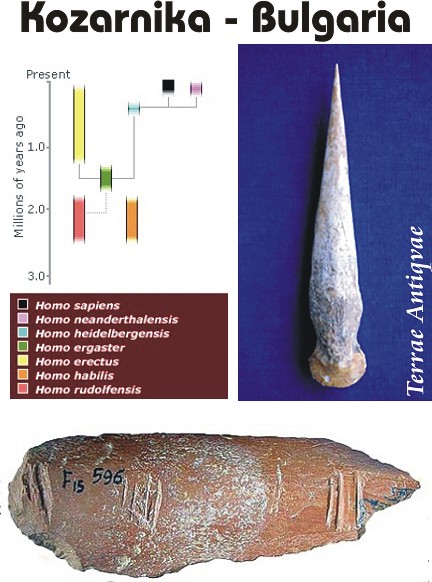
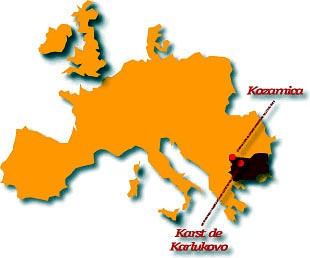
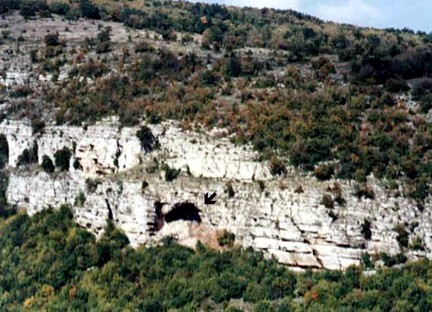
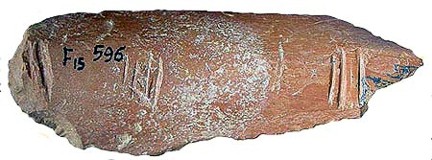
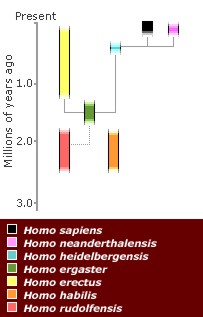
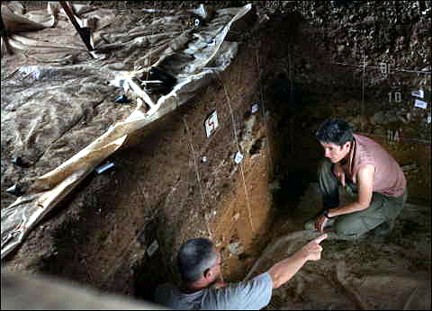
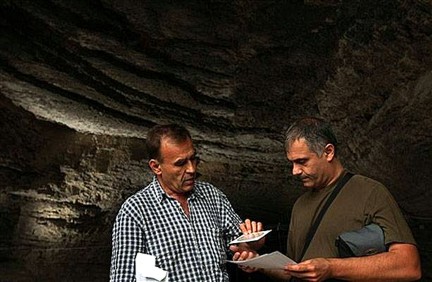
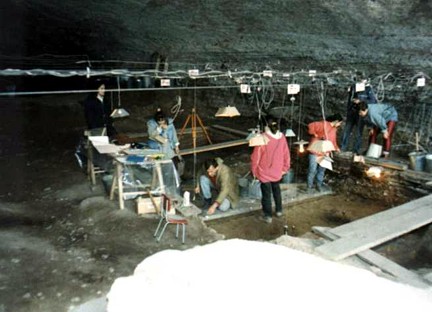
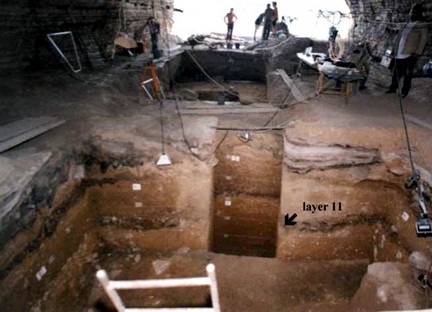
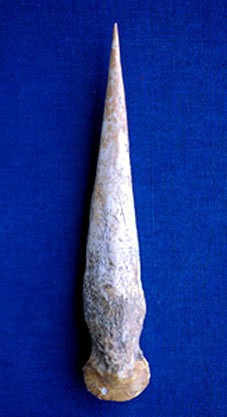
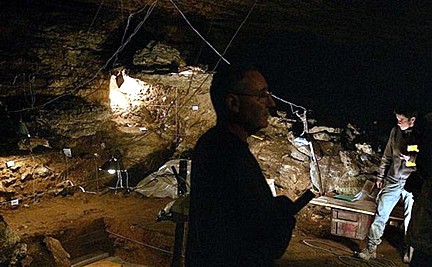
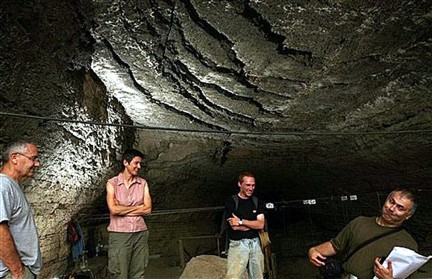
1 comentario
Jorgewic -
Felicidades por tu web, que me parece sencillamente extraordinaria. Siempre he echado de menos este tipo de recursos. Te he enlazado en mi blog y espero que sigamos en contacto frecuente (y fecundo).
Un abrazo